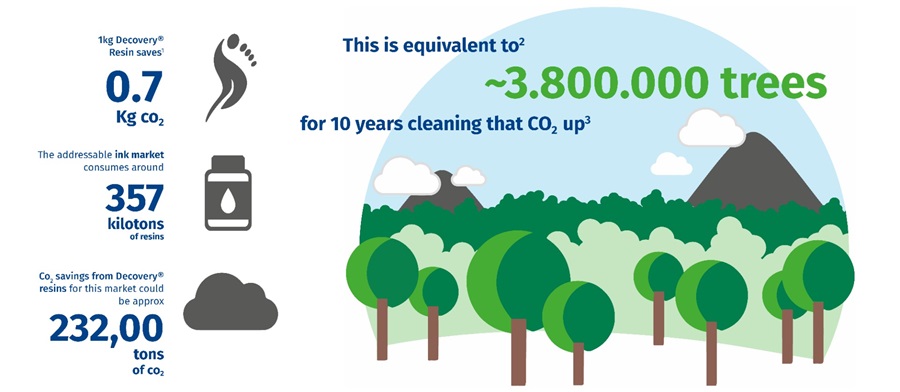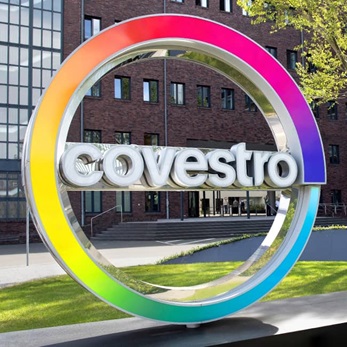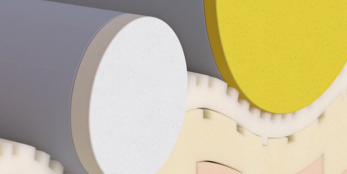
Decovery® SP-6200 XP
Decovery® SP-6200XP, is a self-crosslinking emulsion resin, and is all about performance. It is usable in everything from deep freezer packaging to hamburger boxes and coffee cups.
It is a bio-based acrylic designed for multiple substrates and print layers, and is ideal for flexo and gravure printing. As well as being easy to formulate, it displays good chemical resistance as well as excellent results in rub resistance and blocking tests.
How Decovery® packaging resins help our world
The packaging market is experiencing a surge towards more sustainable technologies. Driven by end-consumer demand, brand owners have announced ambitious sustainability pledges. Now it is up to the entire industry to deliver on these challenging goals.
Our Decovery® portfolio is well suited for the creation of high-quality coating resins that meet the environmental demands of the packaging markets – they contain zero-to-low volatile organic compounds (VOCs), yet can match or even exceed the performance of starch-based alternatives
Decovery® resins are partially made from plant-based resources, such as bark and beans, which are sustainably sourced and do not compete with the food chain.
Decovery® SP-6200XP environmental impact

- Verified by Beta Analytic Inc. (biobased and biogenic carbon testing laboratory), according to ASTM D6866-16 Method B (AMS)
- Data based on internal calculations. Results may vary slightly compared to the final, 3rd party reviewed, life cycle assessment (LCA) report. LCA is currently being conducted according to ISO-14040-14044, IPCC 2013 GWP 100a standard and the WBCSD chemical sector guidance; data expressed in kg CO2/ kg resin; absolute CFP SP-6200: 1.71 kg CO2 / kg resin
- Calculation based on data from United States Environmental Protection Agency
Putting our Decovery® SP-6200XP to the test

Satra rub test
Why we do a Satra test

Anti-blocking test
Why we do a block test
Key Benefits
- Good adhesion to most paper and filmic substrates
- Good reversibility
- Good anti-blocking
- Mechanical resistance
- Water resistance
- Heat resistance
- Chemical resistance
- Food contact compliant
- Low foaming
- Low odor
- Applicable with common print techniques














